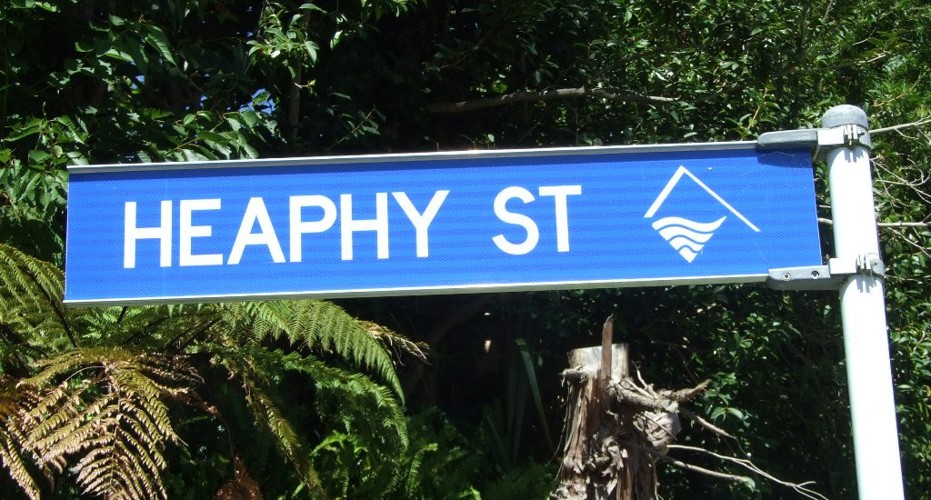 Heaphy Street sign. Mike Gooch. Word on the Street image collection.
Heaphy Street sign. Mike Gooch. Word on the Street image collection.
 Heaphy Street sign. Mike Gooch. Word on the Street image collection.
Heaphy Street sign. Mike Gooch. Word on the Street image collection.
There is an iconic painting called "Mount Egmont, from the southward", which appears in many art history books and can be best described as impressionistic as it presents Te Maunga Taranaki and the surrounding bush in a stylized form that accentuates the vertical. The artist is Charles Heaphy and it is part of a body of work including other topographical watercolours, portraits and charts of New Zealand, that form an important record of early European settlement. Such work was used by the New Zealand Company (NZC) to attract migrants to this part of the world, which might also explain the lack of realism in the work.
Charles Heaphy, the son of a noted water-colourist, was born in London in 1820. He was appointed as artist and draughtsman to the NZC and came to New Zealand aboard the Tory in late 1839 with Colonel William Wakefield. He set about travelling the country, producing these works, including the period in Taranaki. He finally settled in Nelson in 1841 surveying the area around Tasman Bay
With the company struggling, he proposed opening up the interior of the South Island and joined Brunner in their epic 560 day journey to the West Coast from the Nelson district. Unfortunately, his role in propaganda for NZC made him unpopular, and he was forced to take the job of draughtsman in the Auckland Survey Office in 1847.
In 1859 he joined the Auckland Rifle Volunteers and then volunteered for active service in 1863 at the outbreak of war in the Waikato. He became the first colonial soldier to be awarded the Victoria Cross for rescuing a wounded soldier under fire at Pāterangi, near Te Awamutu.
Back in the civilian world in 1864, he reverted to being a surveyor and rather infamously surveyed confiscated Waikato land. Then in 1868, he became Commissioner of Native Reserves, and by 1878 he was Government Insurance Commissioner and a judge of the Native Land Court.
Ill health saw him resign from all positions in 1880 and he left for Australia in 1881, where he died on 3 August 1881. He is buried at Toowong Cemetery in Brisbane.
This story was originally published in the Taranaki Daily News.
Please do not reproduce these images without permission from Puke Ariki.
Contact us for more information or you can order images online here.